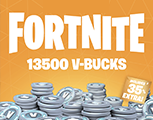MuleSoft offers the most effortless and frequently used integration platform to connect SaaS applications both on-premise and cloud. The MuleSoft integration platform lets you unlock data across a variety of platforms, devices and applications. Not only that, it also allows you to make faster and smarter decisions as you find a way to offer a customized and integrated view to your end users. In this blog, we understand all about MuleSoft architecture, its functioning, and various use cases. Let’s get started.
Table of Contents:
What is MuleSoft Architecture?
MuleSoft integration architects use a great deal of API-led connectivity. APIs are extensively used to simplify processes. When you integrate data from varying systems and processes with the help of APIs, you not only simplify the process but also give yourself enough time to focus on your business processes.
This way, APIs prove out to be a great way of seamless integration through reusable codes. Where does MuleSoft anypoint architecture fit in this? Well, the structured application network that makes this integration possible happens only with the help of api-led architecture in MuleSoft.
To add to that, cloudhub architecture provides enterprises with a secure, elastic and highly available iPaaS (integration platform as a service).
Components of MuleSoft Architecture
Processors in the Flow
Processors are an integral part of MuleSoft architecture. These are also divided into varying functional categories. In fact, some of these categories are processing blocks that contain a large number of processors themselves. Just so you know, not all the processors can acquire positions in a flow.
Where the processor is positioned in the flow affects a great deal of its behavior and also determines how much of it has to be configured.
API-led Connectivity
API-led connectivity is a seamless way of connecting applications through the use of purposeful and reusable APIs. APIs have a purpose, be it delivering an experience, composing data into different processes or unlocking data from various systems.
API-led connectivity not only simplifies the process it also empowers individuals to deliver better with increased productivity and capabilities.
Apart from depending upon various categories of reusable APIs to create new services, API-led connectivity also ensures the democratization and decentralization of data.
Exchange Patterns
Most of the Anypoint connectors are endpoint-based, which means they either work as inbound or outbound endpoints, facilitating communication with universally recognized protocols such as FTP, HTTP, and SMTP.
Inbound and outbound endpoints can establish request-response or one-way exchange patterns. When inbound or outbound endpoints get configured with a request-response exchange pattern, it automatically turns into a hybrid inbound-outbound endpoint.
Recommended Reading:
Processing Strategies
Processing strategies are quite crucial when it comes to MuleSoft service-oriented architecture. It understands how the sequence of message processors are executed in an application.
Let’s say the source of a message is configured with a request-response exchange pattern, the Anypoint sets the processing strategy to synchronous. This makes sure that the flow is executed on a single thread and the message processors are executed adequately to give an expected response.
On the other hand, when the same flow is configured for a one-way exchange pattern, the processing strategy is set to asynchronous. Which means the incoming message is put into the queue instantly as it is received by the incoming endpoint. After that, the receiver thread is closed.
Flow Architecture
The flow architecture of Mulesoft Anypoint Platform is highly flexible. It gives you an opportunity to combine processors in several ways. This is done to accomplish the same result. However, for various use cases, specific message processors have loosely organized patterns.
Use Cases of MuleSoft Architecture
MuleSoft Architecture finds application in a wide range of use cases across industries. Let us explore some areas where MuleSoft architecture finds usage:
Application Integration: Gaining a unified view of processes and applications is what MuleSoft excels at. Integrating diverse applications such as CRMs, ERPs and legacy systems forms the core functioning of MuleSoft anypoint architecture.
Data Integration: Data integration is connecting disparate data sources such as databases, data warehouses, cloud storage, etc. MuleSoft api-led architecture provides the perfect tools and capabilities to streamline data integration workflows.
API Management: API management is another use case of MuleSoft architecture. MuleSoft’s API management capabilities include creating, publishing, and managing APIs effectively. Whether it’s providing internal data to developers or monetizing data assets through APIs, MuleSoft architecture provides tools to drive API-led innovation and ecosystem growth.
Healthcare Integration: MuleSoft integration architecture has a big role to play in healthcare interoperability. By integrating electronic health records, medical devices and patient portals, it helps greatly improve patient care, streamline operations and enhance decision-making.
Financial Services Integration: MuleSoft architecture enables financial institutions to integrate core banking operations, CRM platforms and regulatory compliance systems. By ensuring seamless data flow and process automation, MuleSoft helps financial service providers deliver personalized experiences and meet regulatory requirements.
Takeaway
In conclusion, MuleSoft integration architecture offers a rather powerful platform for integration, enabling enterprises to connect applications, data, and APIs with ease. With its robust features, scalability, and versatility, MuleSoft empowers businesses to integrate and unlock new opportunities for innovation.
The various use cases of the MuleSoft api-led architecture in the various sectors of the industry make it a viable tool for data and process integration endeavors.
At BluEnt, we have an adept team of MuleSoft-certified developers who excel at integration solutions. If your organization has specific integration needs, we have tailor-made solutions for you. Feel free to connect with us should you have any requirements.












 The Power of Data in Enhancing Gift Card Customer Retention and Engagement
The Power of Data in Enhancing Gift Card Customer Retention and Engagement  Dell Boomi Integration Platform Explained: Architecture, Benefits, and Comparison with MuleSoft
Dell Boomi Integration Platform Explained: Architecture, Benefits, and Comparison with MuleSoft  Explainable AI (XAI): Bridge of Trust Between AI and Humans
Explainable AI (XAI): Bridge of Trust Between AI and Humans  How is the MuleSoft eCommerce Integration Platform Mitigating Retail Challenges?
How is the MuleSoft eCommerce Integration Platform Mitigating Retail Challenges? 
